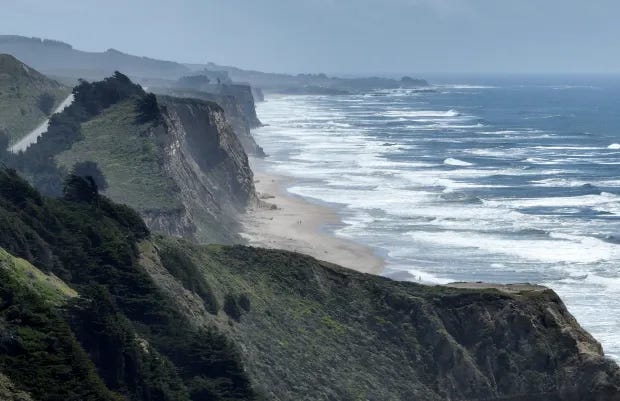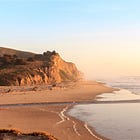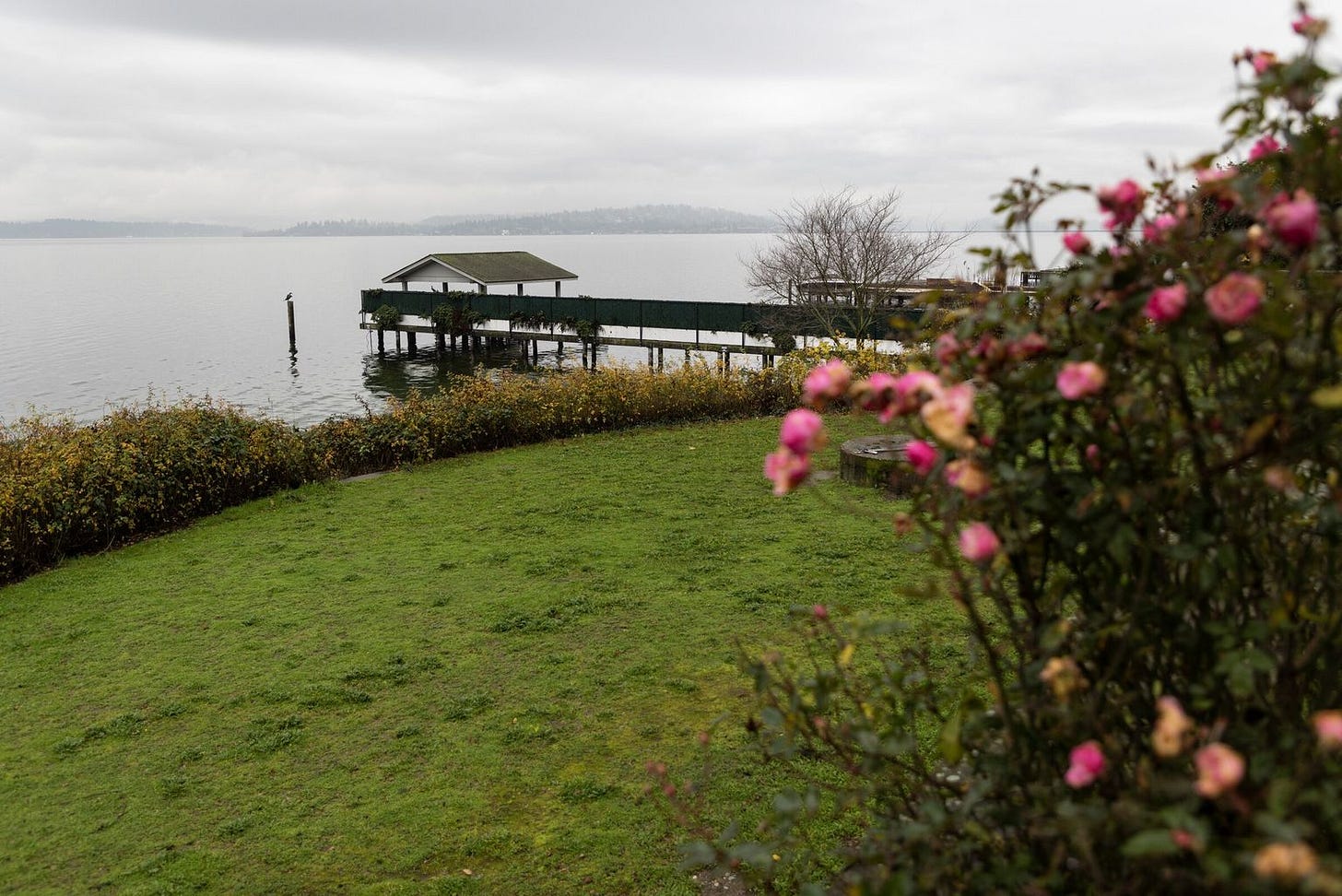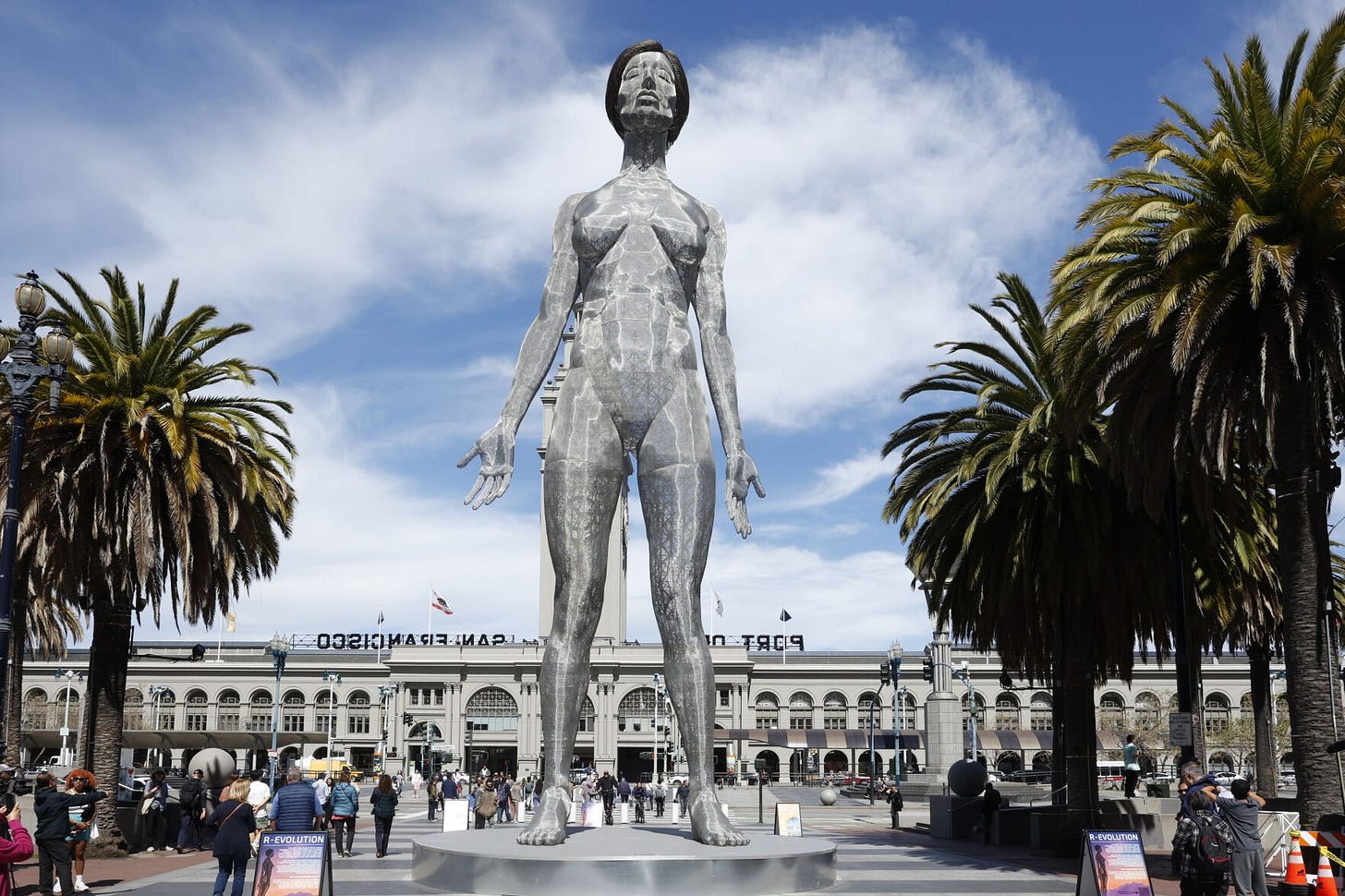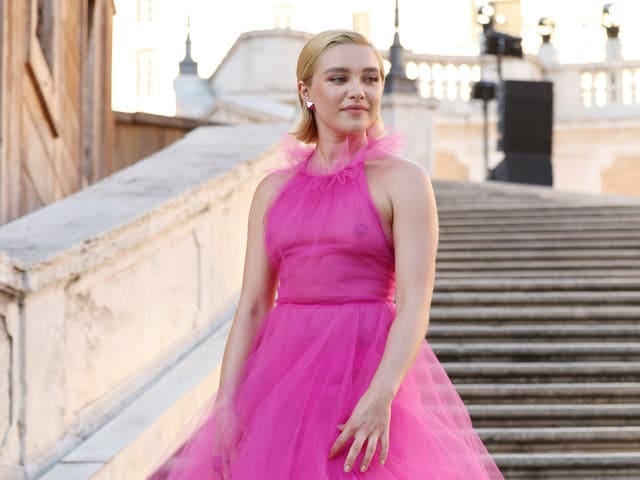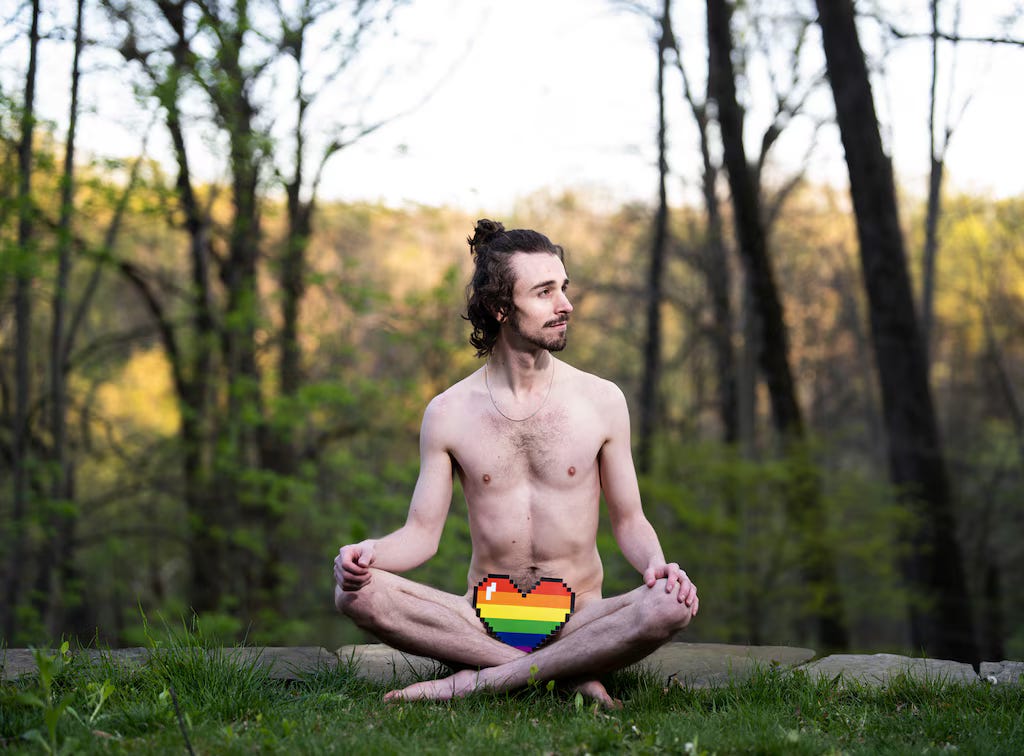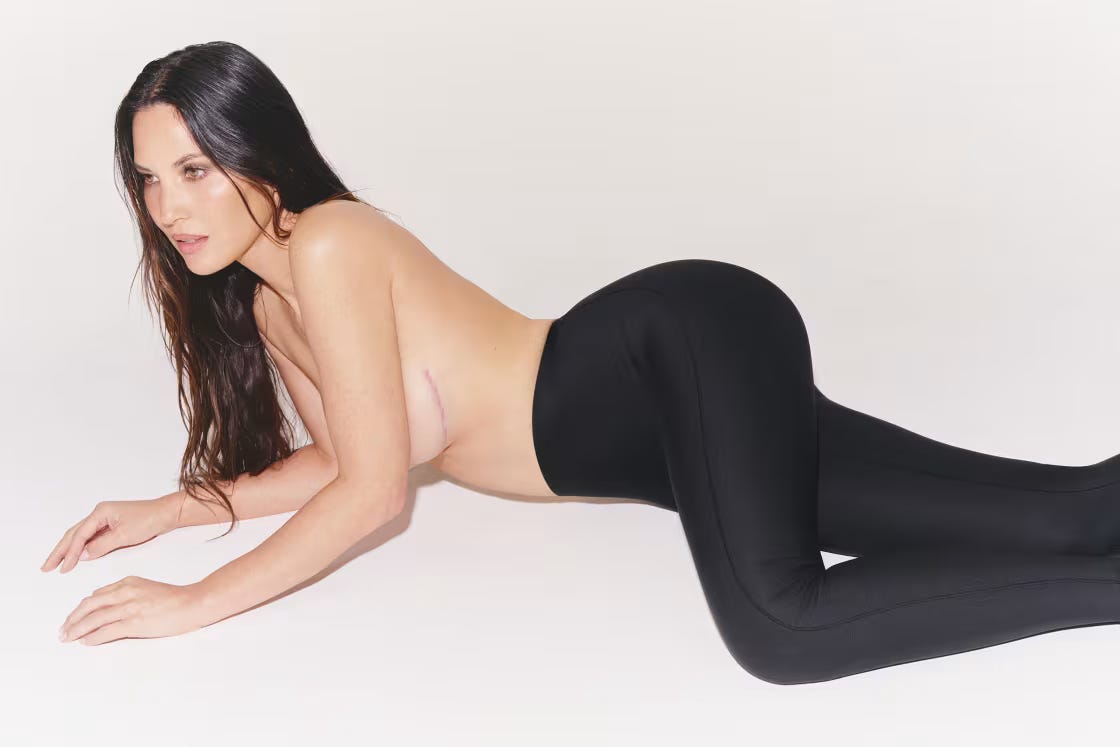News of the Nude, Apr. 2025
Volume 28: Another curated compendium of nude-centric stories and curiosities
Welcome to another News of the Nude.
This is a good one. Yep, some really interesting stories in this little compendium. One particular theme that stands out is the persistent double standard between male and female nipples. Somehow this lightning-rod topic seems to present itself in many facets of culture, and across cultures. There is also much to be inspired by in this collection of stories, including cases of powerful and inspiring nude expression and nudity forming connections. It’s good!
So I won’t hold you up any further. Read on. 🚀
News of the Nude, Vol. 28 🪐
Spanish swimming pools in Catalonia told not to ban topless bathing
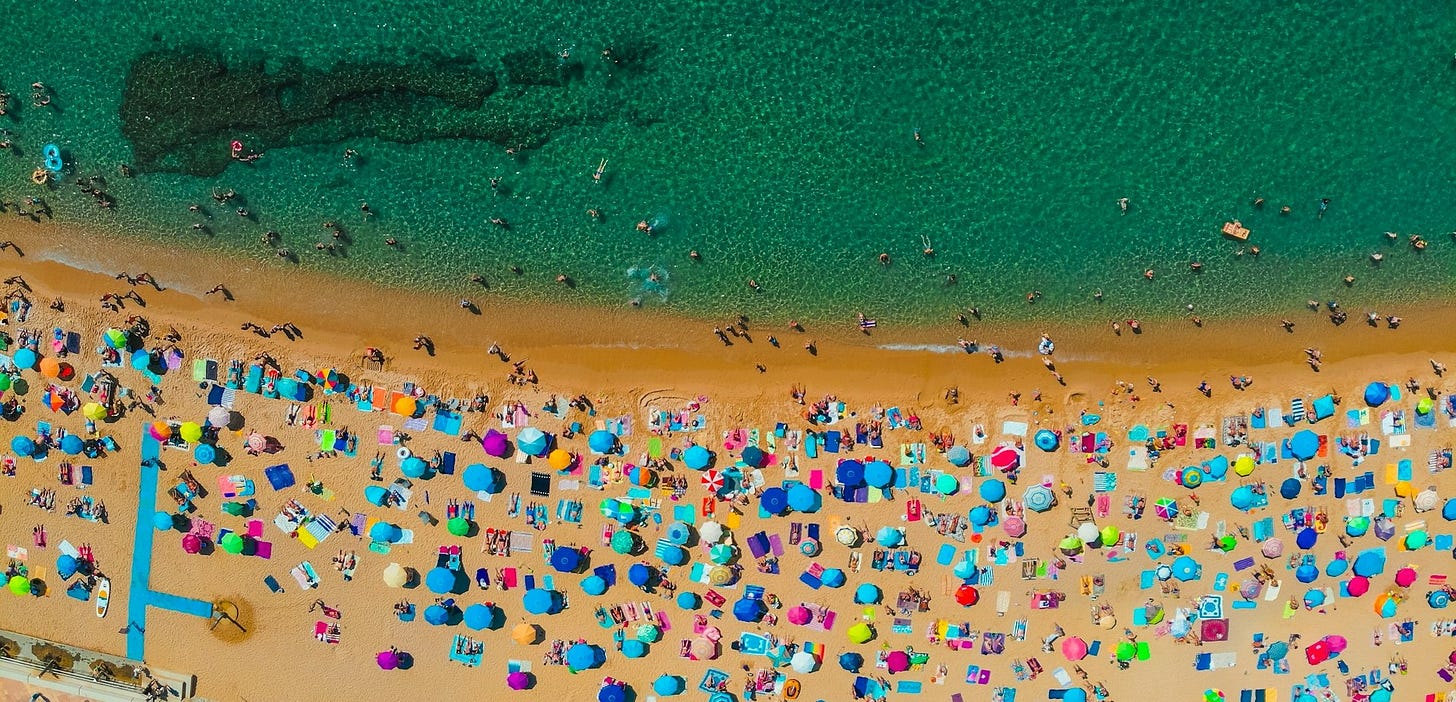
Following years of complaints, the Catalan government has formally reminded municipalities across the region that banning topless sunbathing in public swimming pools is unlawful. The practice has been protected under Catalonia’s 2020 equality law, but inconsistent enforcement has led to some women being turned away for baring their chests—something that is perfectly legal under a 2020 Catalan law.
In a letter sent to town halls, the government’s department of equality and feminism clarified that preventing toplessness constitutes gender discrimination, alongside other forms of bias such as religion or dress. Local authorities are now obliged to permit not only topless bathing, but also breastfeeding and full-body swimwear like the burkini.
The move follows activism by the feminist group Mugrons Lliures (“Free Nipples”), which argued that topless bans enforced a double standard. While framed as a “reminder,” the government made clear that noncompliance could result in fines up to €500,000—asserting toplessness as a matter of legal and bodily autonomy. 🚀
Bay Area oceanfront ranch with clothing-optional beach bought for preservation
The Peninsula Open Space Trust (POST) has announced plans to purchase San Gregorio Ranch, a 195-acre coastal property south of Half Moon Bay that includes a little-publicized but long-celebrated clothing-optional beach. Known to regulars since the 1960s, San Gregorio nude beach has held a central place in California’s naturist and LGBTQ+ history, drawing beachgoers of all orientations to its secluded shoreline and iconic driftwood shelters. POST’s $10 million acquisition will preserve the site’s ecology, protect it from development, and maintain public access—ensuring this historic stretch of coast remains open to sunbathers, fishermen, and naturists alike. The land may eventually be folded into the California Coastal Trail or transferred to state stewardship. For now, POST says it will keep operations largely unchanged. We can only hope that they keep an eye toward expanding access and securing the site’s legacy as a rare haven for nude recreation on the Pacific. 🚀
Read more:
Residents sue Seattle over management of nude beach
Seattle’s Denny Blaine Park, a historic refuge for nudists and the LGBTQ+ community, is once again under threat. Last week, neighborhood residents filed a lawsuit against the city, accusing officials of failing to stop public misconduct such as drug use and lewd acts. While residents claim the suit isn’t about sexuality or nudity, advocates like Friends of Denny Blaine (FODB) see it differently—viewing the case as a direct attack on the park’s clothing-optional tradition. FODB argues that community-led solutions are more effective than heavy policing and warns that overregulation would erase one of Seattle’s few affirming nude spaces. As tensions escalate, Denny Blaine’s future is shaping up to be a critical test of whether body freedom and queer visibility can survive neighborhood pressure.
Planet Nude covered this story last week, digging into the broader fight over nudity, community space, and who gets to define it. 🚀
Read it:
Massive statue of giant naked woman officially unveiled at SF Embarcadero
A towering 45-foot nude sculpture titled R-Evolution now stands along San Francisco’s Embarcadero, relocated from its originally intended home in Union Square due to engineering concerns. Created by artist Marco Cochrane and first exhibited at Burning Man in 2015, the steel mesh figure is designed to symbolize feminine strength and empowerment.
Despite its size—nearly 13 tons including its base—the installation was embraced with celebration at its new waterfront home, complete with live music and art festivities. For those advocating body freedom and rethinking public nudity, the statue is more than art: it's a monumental reminder that the naked body, when de-sexualized and placed in a context of strength and visibility, can shift cultural perceptions from taboo to transcendence. San Francisco makes an appropriate home for such a statement. 🚀
Two Fife beaches [incorrectly] appear on list of UK’s top 60 nudist destinations
A recent Daily Mail roundup of top UK nudist destinations included two beaches in Fife—Kinshaldy at Tentsmuir and Lower Largo—surprising some locals and prompting regional coverage by The Courier. While both sites have seen occasional nude use, neither is officially designated as naturist, and local figures cast doubt on their current popularity. Some recall historic use of nearby Dumbarnie Links, while Forestry and Land Scotland clarified that nude use at Kinshaldy has long been limited to discreet visitors in quieter areas.
Public nudity in Scotland is not illegal per se, but its legality depends on context and conduct. Forestry officials reiterated that nudists should be respectful of other visitors, especially on busy days. While the article stops short of controversy, its focus on community surprise underscores the lingering tension between informal nude use and local perceptions—even when behavior remains within the bounds of the law. 🚀
Why I Hang Out Naked with Strangers
In his excellent TEDxStLouis talk, writer and sex educator
delivers a sharp, funny, and deeply thoughtful case for social nudity as a path to body acceptance and human connection. Drawing from years of experience organizing clothing-optional events and workshops in St. Louis, Wraith dismantles the idea that nudity must be inherently sexual or shameful. Instead, he frames it as a tool for building trust and dissolving the barriers we put between ourselves and others. I wasn’t previously familiar with Wraith’s work, but after watching this, I’m an instant fan. It’s a must-watch for anyone who believes body freedom is about connection and vulnerability, not spectacle. 🚀Sponsor message:

Free the nipple: Why are people still so afraid of women’s breasts?
In this sharply written piece, Olivia Petter investigates the lingering social taboos around visible female nipples—on red carpets, in fashion, and on social media. Drawing on new YouGov data and celebrity flashpoints like Charli XCX’s Brit Awards gown and Florence Pugh’s infamous Valentino look, Petter paints a conflicted cultural picture: women face far more backlash than men for embracing sheer clothing, and often from other women.
The article astutely argues that the nipple remains a persistent lightning rod for discomfort, censorship, and projection—despite over a decade of #FreeTheNipple activism. Petter’s closing thought is worth repeating: wearing something sheer can be both gutsy and joyful—an act of reclamation, not provocation. 🚀
A queer artist’s nude protest of Trump went viral. It turned their life upside-down
Tavish Forsyth, a queer artist and educator, made headlines after posting a nude protest video rejecting President Trump's appointment as Kennedy Center chairman and condemning the erosion of LGBTQ+ and DEI programs. In the viral 35-minute YouTube video, Forsyth stripped down to emphasize vulnerability and resistance, quoting RuPaul: “We’re all born naked and the rest is drag.”
The fallout was swift: Forsyth lost their positions at both the Kennedy Center and Johns Hopkins University, and faced harassment after media figures attacked them. YouTube briefly removed the video before later reinstating it. Despite financial and personal consequences—including relocating for safety—Forsyth remains defiant, framing their protest as a broader human rights stand, not just a queer issue.
Their story fits squarely into a growing dossier of nude activism as a form of political resistance in the current political era, where the body itself becomes a declaration of dignity and refusal. 🚀
Olivia Munn discusses going topless in new show following her double mastectomy
In a vulnerable and powerful interview, actress Olivia Munn reflected on her topless role in Your Friends and Neighbors, revealing that her relationship with her body has grown stronger since undergoing a double mastectomy. Munn, who was diagnosed with aggressive breast cancer in 2024, said she feels “less insecure” now, attributing her confidence to the resilience her body has shown.
Munn’s openness around her scars—including a decision to display them in a recent SKIMS campaign—marks a shift in how post-surgical bodies are represented in media. By stepping into nude scenes with agency and clarity, she reframes nudity not as titillation, but as a deeply human act of survival and self-acceptance. It’s a reminder that body freedom is not always about the absence of clothes—it’s about presence, choice, and the power of being seen. 🚀
Transgender woman’s topless dance at Songkran festival sparks backlash
During the final day of Thailand’s Songkran festival on April 15, 2025, a transgender woman dancing topless in Nakhon Ratchasima ignited a national debate over cultural norms and public decency. The incident, captured in a widely circulated video, shows the woman surrounded by male revelers, some of whom touched her and rested their heads on her chest. Critics argue that such behavior tarnishes Thailand’s cultural image, while others question the selective enforcement of decency standards, noting that male toplessness is commonplace during the festival. Authorities are reportedly considering legal action under public obscenity laws.
Officials responded with a broader crackdown: in Phuket, police arrested 37 individuals—mostly transgender women—citing concerns over tourism and public decency. Details remain vague, but the message was clear.
While Songkran has long encouraged joyful chaos, this year’s moral panic reveals the narrow margins within which public nudity is tolerated. The reaction wasn’t just about exposure—it was about whose bodies get to be seen, and under what conditions. In a festival that once celebrated liberation through water, the policing of bodies felt like a sharp undertow. 🚀
Yacht full of nudists risk jail after stripping off near onlookers at Sydney Harbour
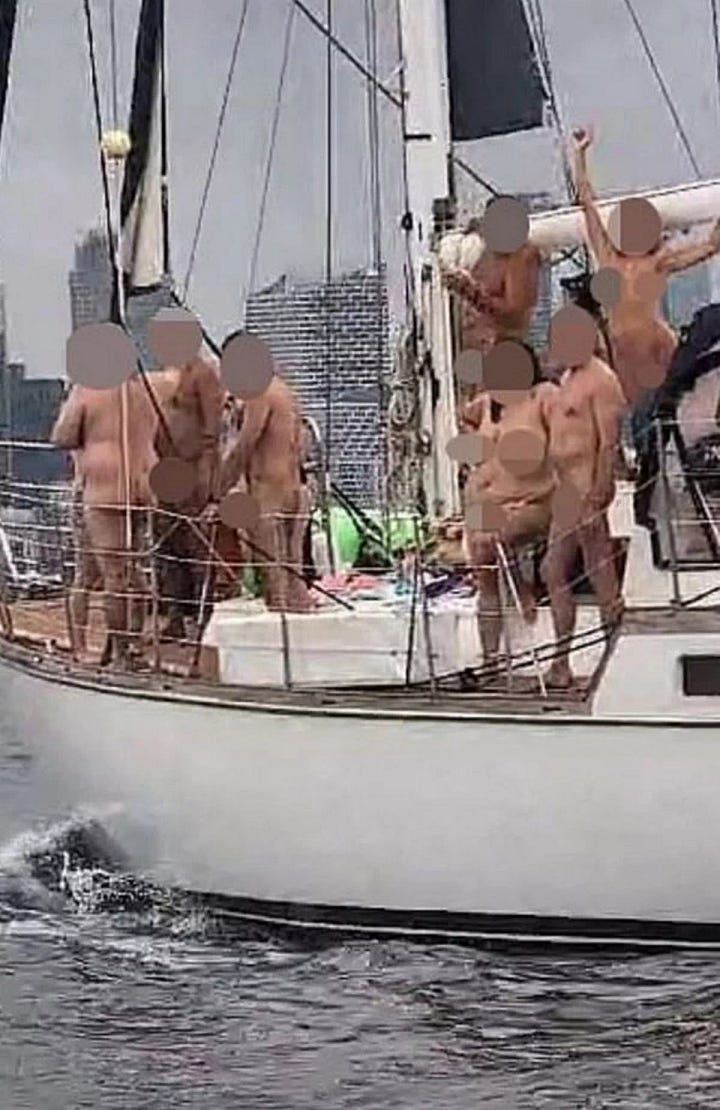
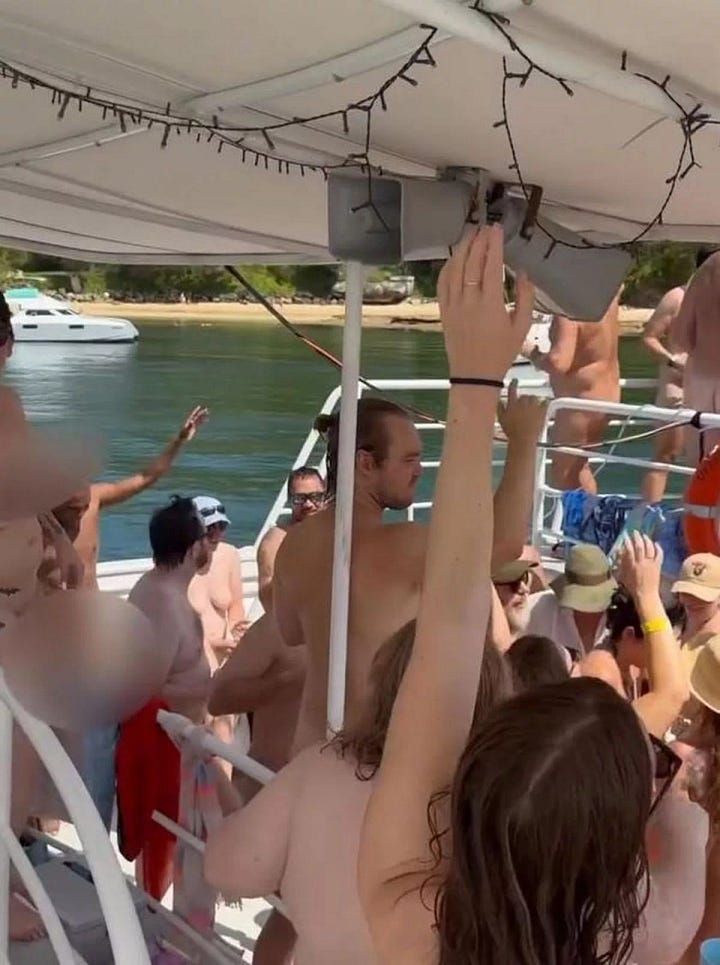
I weighed wether or not to include this story in this edition, as it has been covered so sensationally as to have effectively made a mountain out of a molehill sized story, but it was all over my google alerts for several days being covered in all sorts of Australian and international media for some reason, that it “bared” commenting on. A group of nude partiers aboard a yacht in Sydney Harbour reportedly drew a mix of cheers, complaints, and phone footage, with the Daily Star and other outlets suggesting they could face jail time under New South Wales laws on public exposure. The article linked above leans into spectacle, emphasizing stunned reactions and salacious details, while downplaying the context: the group was on a private vessel during what appeared to be an organized nude cruise.
Unfortunately, the tone implies guilt by association, using nudity itself as the punchline. The framing reinforces the tired narrative that public nudity—even in a controlled, celebratory setting—is cause for alarm, rather than a legitimate expression of body freedom. 🚀
Zoro Garden: From nudists to butterflies
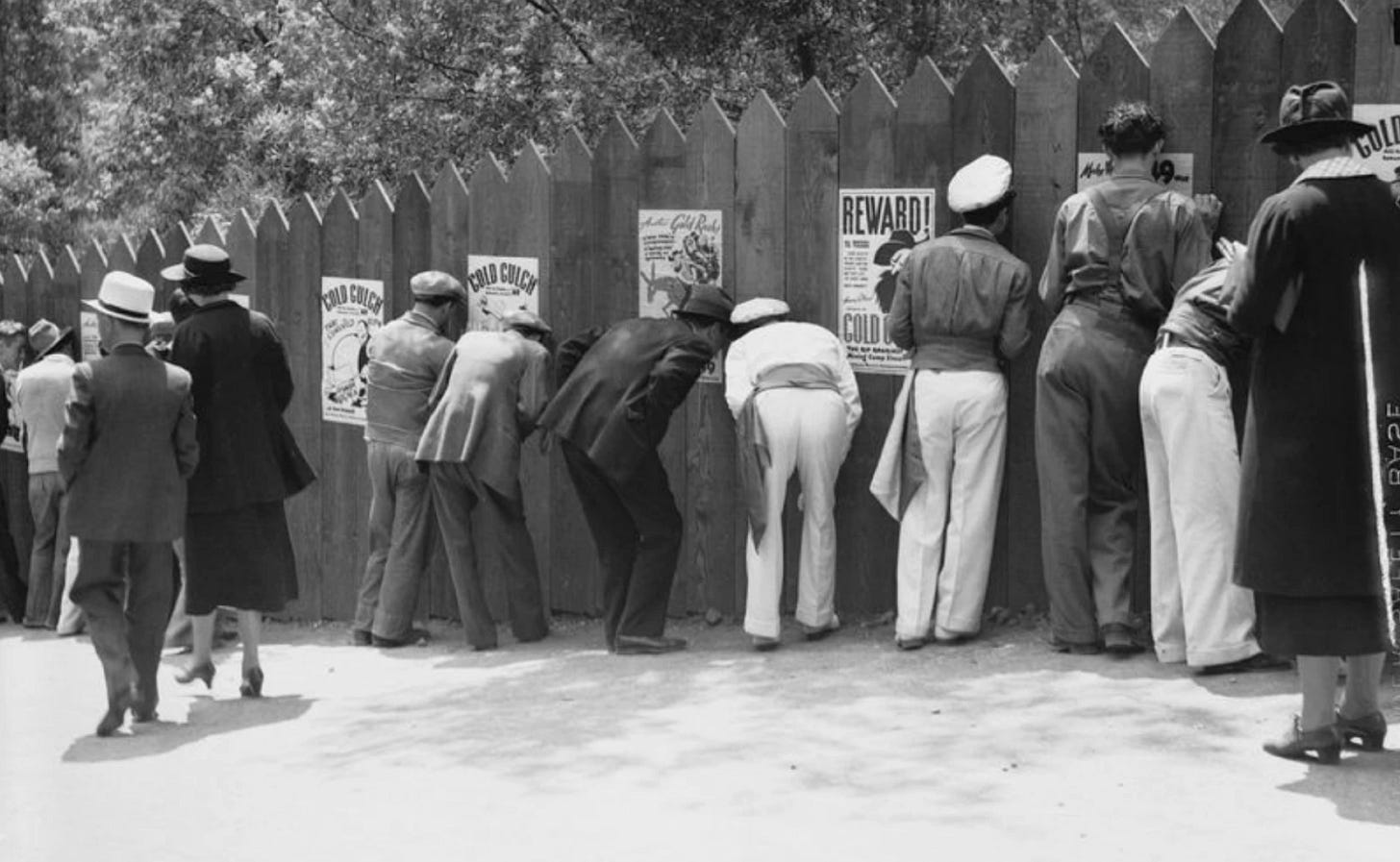
In a gentle walk through San Diego history, KPBS revisits the origins of Balboa Park’s Zoro Garden, once home to a staged “nudist colony” during the 1935-36 Pacific International Exposition. Today a butterfly garden, the space’s past is remembered more as spectacle than philosophy. The original "colony" was composed of actors, clothed just enough to satisfy public decency laws, and promoted by sideshow impresario Nate Eagle—earning high profits from curious spectators who could pay to gawk or peek for free.
The article centers on local explorer Jessica Johnson of Hidden San Diego, who shares the garden's layered history while encouraging readers to seek hidden stories around them. A 2017 recreation of the nudist tableau is briefly mentioned, but there’s little interrogation of the ethics behind the original display or its implications for public understanding of naturism. Ultimately, the piece frames the past more as quirky curiosity than social history—a missed opportunity, perhaps, to explore how staged nudity shaped cultural perceptions of the unclothed body. But that’s not exactly what the article set out to do. 🚀
That’s it for April.
Every month we come back here to review the media and their framing of nudity and nude expression in the world. Each month we learn a little bit more. But that’s it for this month. That’s all she wrote. It’s all over now.
We’ll see you next month. 🪐
Disclosure: This post used generative AI to support the writing and editing process.


